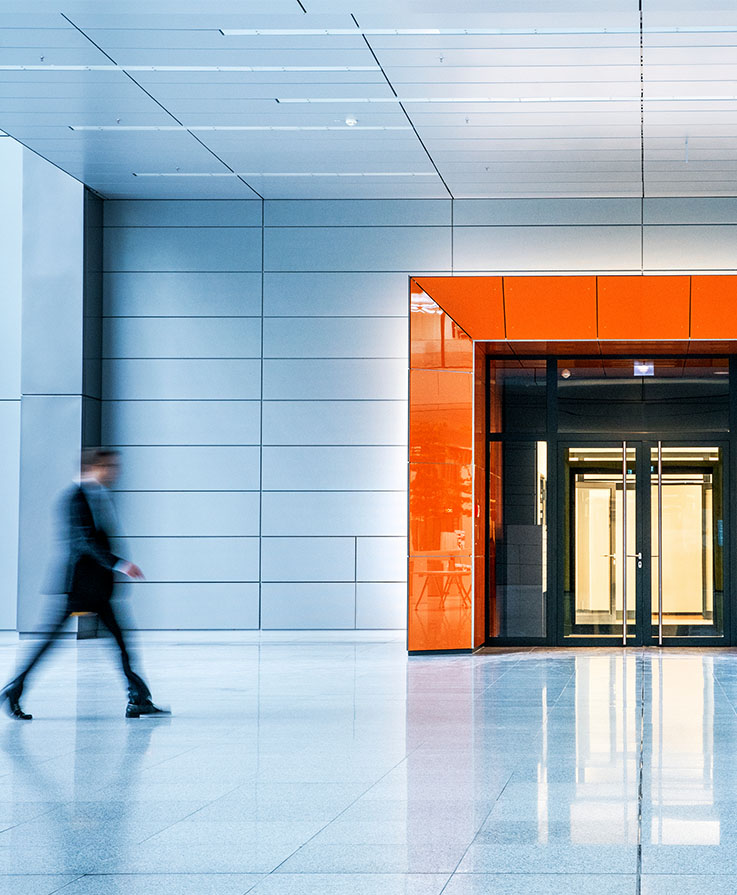LEED is a voluntary certification sought by building owners for new or existing commercial, institutional, or high-rise-residential buildings. LEED accreditation for housing and neighborhood development is being developed as well. Elements of a building’s design, construction and materials earn credits towards a possible total of 100+ credits. Four levels of LEED certification can be earned based on the number of credits a building earns

Select LEED Projects
View some of our extensive LEED experience through these projects online. Please contact us for a complete list.
LEED points that HTS can help your project team achieve include:
Optimize Energy Performance
The intent is to achieve increasing levels of energy performance beyond the prerequisite standard to reduce environmental and economic impacts associated with excessive energy use. We can help by providing premium efficiency chillers and energy recovery units. Your project could achieve as many as 6 points without changing anything else.
(Energy and Atmosphere Credit 1, 1-21 points)
Enhanced Refrigerant Management
The intent is to reduce ozone depletion and support early compliance with the Montreal Protocol while minimizing direct contributions to climate change. We can help by providing refrigerants, none of which have ozone depletion potential.
(Energy and Atmosphere Credit 4, 2 points)
Outdoor Air Delivery Monitoring
The intent is to provide capacity for ventilation system monitoring to help promote occupant comfort and well-being. We can help by providing equipment to monitor CO2 concentrations and measure the outdoor air flow to comply with this requirement. Also, HTS can provide Outdoor Air fan measuring stations.
(Indoor Environmental Quality Credit 1, 1 point)
Increased Ventilation
The intent is to provide additional outdoor air ventilation to improve indoor air quality and promote comfort, well-being and productivity for the occupants. We can help by providing energy recovery and dehumidification products, which make this credit easily attainable.
(Indoor Environmental Quality Credit 2, 1 point)
Indoor Air Quality Management Plan – During Construction
The intent is to reduce indoor air quality problems resulting from construction or renovation and promote the comfort and well-being of construction workers and building occupants. We can help by providing MERV 8 filters, which are available for all our airside equipment.
(Indoor Environmental Quality Credit 3.1, 1 point)
Indoor Chemical and Pollutant Source Control
The intent is to minimize building occupant exposure to potentially hazardous particulates and chemical pollutants. We can help by providing MERV 13 filters, which are available for our airside equipment.
(Indoor Environmental Quality Credit 5, 1 point)
Controllability of Systems – Thermal Comfort
The intent is to provide a high level of thermal comfort system control by individual occupants or groups in multi-occupant spaces (e.g., classrooms or conference areas) and promote their productivity, comfort and well-being. We can help by providing VAV boxes, Daikin VRV systems and individual fan coil units, which allows for individual control.
(Indoor Environmental Quality 6.2, 1 point)
Thermal Comfort – Design
The intent is to provide a comfortable thermal environment that promotes occupant productivity and well-being. HTS can help by assisting the engineer and owner with achieving this credit.
(Indoor Environmental Quality Credit 7.1, 1 point)
Thermal Comfort – Verification
The intent is to provide for the assessment of building occupants’ thermal comfort over time. We can help because HTS offers a controls system interface for our equipment. We can also provide the BAS system that can log the data required for the LEED designation. Additionally, we can provide a permanent monitoring system to ensure that building performance meets the desired comfort criteria.
(Indoor Environmental Quality Credit 7.2, 1 point)
Enhanced Acoustical Performance
The intent is to provide classrooms that facilitate better teacher-to-student and student-to-student communication through effective acoustical design. We can help by assisting the owner with the most effective design possible.
(Indoor Environmental Quality, Credit 9, 1 point, school only)
Mold Prevention
The intent is to reduce the potential presence of mold in schools though preventive design and construction measures. We can help by providing equipment that can keep the space’s relative humidity below 60% during all load conditions.
(Indoor Environmental Quality, Credit 10, 1 point, school only)



